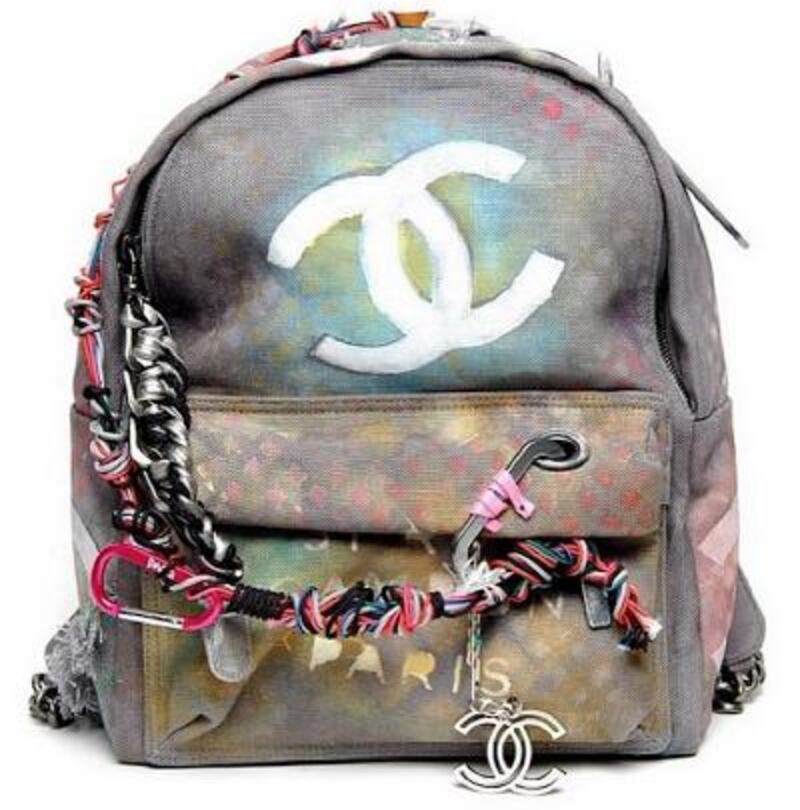When one thinks of high fashion, one imagines a world of luxury, excess and a beauty that could reduce the most stony-faced person to sobs. For the vast majority, designer clothing is the unattainable, escapist stuff that great daydreams are made of. It is exclusive, meticulously put-together and belongs in places the average Jill would never dare to go.
This season, however, the atmosphere has been a bit different. Instead of fantasy and excess, fashion onlookers have been treated to a hallucinogenic supermarket sweep. At Chanel during Paris Fashion Week, Karl Lagerfeld had the Grand Palais mocked up to look like a French hypermarket, shelves stuffed with Chanel-branded, pun-heavy groceries such as Jambon de Cambon, Choco Chanel biscuits and boxes of Little Black Tea.
More than one wag wondered, looking at the sea of bored and po-faced models in jogging pants, trainers and noise-cancelling headphones on the catwalk, why he didn’t send models off to buy their Coco Flakes in luxuriously ratty pyjamas instead.
A bit of a

joke
This is throwaway fashion for the new generation – and it’s all a bit of a joke. As broadband speeds get faster and the world gets smaller, it becomes more difficult to make a statement in a world where everyone has the same Topshop jeans.
Karl Lagerfeld is a consummate communicator with the media. He taps into the human desire to stand out and persuades consumers that they should pay big to fulfil it. He knows how to get attention and, more importantly, he knows the value of social media. But is luxury fashion losing the run of itself?
An example. For this spring, Lagerfeld showcased a rucksack mocked up to look like schoolbags customised by students with too much Tippex and a limited amount of creativity. Granted, the backpacks were linen canvas (spray-painted to look slightly rusty and grimy) and weathered leather, with silver hardware and hand-woven accents. Prices start at €2,300. It’s a consumerist wonderland. Everyone can window-shop, but only a lucky few can buy.
Trade is fairly brisk despite the fact that this rucksack will be passé in three months. When everyone wants an item that no one can afford, its fleetingly covetable nature means someone somewhere will find the funds to blindly buy. It is a genius marketing move on Lagerfeld’s part, but, for people who want to purchase a quarter year of envious looks from others, it might be a slightly shaky investment. If the classic Chanel quilted leather 2.55 is a government cash ISA, then the rucksack is remortgaging your house to go play with the Wolf of Wall Street.
Lagerfeld isn't the only designer tapping into the internet zeitgeist. The marriage of Italian label Moschino with American designer Jeremy Scott was, it seemed, made in fashion heaven. Moschino clothing wears a heavy sense of irony with the lightest touch, while Scott is an avowed lover of all things pop-culture and bad taste. For autumn-winter, Scott was heavily influenced by McDonald's, appropriating the golden arches and the red and yellow colour scheme for dresses, suits, bags and phone covers. Through sharing websites such as Twitter, Tumblr and Instagram, it quickly became ubiquitous. A capsule collection was pre-released, most of which has already sold out. Credible counterfeit phone covers can now be bought for pennies on eBay.
Many McDonald’s workers are richly peeved at the collection, which is understandable when the average fast-food worker earns the minimum wage and a Moschino bag ranks at about the €1,000 mark. Then again, this isn’t really fast food – it’s fast-food fashion. It looks great, but goes soggy quite

quickly.
A fleeting kind of cool
One can't deny that quirky items such as rucksacks and phone covers are cool, but they're the most fleeting, transient type of cool. Despite the look-at-me obviousness, they're a whisper of a trend, built to fade into obscurity. They're so cool, they're cold – lifeless, frozen, immobile. Such items are so self-consciously quirky and idiosyncratic that an individual could not possibly put her own style stamp on them. This is the peril of buying accessories that are personalised without a particular person in mind.
These prestige items are not aimed at people. Rather, they are aimed at status-seeking consumers; wandering fleshpots flashing wads of cash. They are not made to speak to the buyer on a personal level. Instead, they’re made to shout, long and loud, on the buyer’s behalf. This is consumerism at its most honest, but in stripping away the pretences of exclusivity and luxury, shopping is exposed as an empty, almost ugly pursuit – and we all know that appearing ugly is not the endgame of the fashion industry.

















